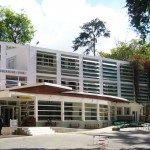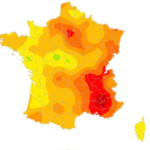Lien vers Pubmed [PMID] – 30930106
Lien DOI – S1473-3099(18)30730-810.1016/S1473-3099(18)30730-8
Lancet Infect Dis 2019 05; 19(5): 537-545
Madagascar accounts for 75% of global plague cases reported to WHO, with an annual incidence of 200-700 suspected cases (mainly bubonic plague). In 2017, a pneumonic plague epidemic of unusual size occurred. The extent of this epidemic provides a unique opportunity to better understand the epidemiology of pneumonic plagues, particularly in urban settings.Clinically suspected plague cases were notified to the Central Laboratory for Plague at Institut Pasteur de Madagascar (Antananarivo, Madagascar), where biological samples were tested. Based on cases recorded between Aug 1, and Nov 26, 2017, we assessed the epidemiological characteristics of this epidemic. Cases were classified as suspected, probable, or confirmed based on the results of three types of diagnostic tests (rapid diagnostic test, molecular methods, and culture) according to 2006 WHO recommendations.2414 clinically suspected plague cases were reported, including 1878 (78%) pneumonic plague cases, 395 (16%) bubonic plague cases, one (<1%) septicaemic case, and 140 (6%) cases with unspecified clinical form. 386 (21%) of 1878 notified pneumonic plague cases were probable and 32 (2%) were confirmed. 73 (18%) of 395 notified bubonic plague cases were probable and 66 (17%) were confirmed. The case fatality ratio was higher among confirmed cases (eight [25%] of 32 cases) than probable (27 [8%] of 360 cases) or suspected pneumonic plague cases (74 [5%] of 1358 cases) and a similar trend was seen for bubonic plague cases (16 [24%] of 66 confirmed cases, four [6%] of 68 probable cases, and six [2%] of 243 suspected cases). 351 (84%) of 418 confirmed or probable pneumonic plague cases were concentrated in Antananarivo, the capital city, and Toamasina, the main seaport. All 50 isolated Yersinia pestis strains were susceptible to the tested antibiotics.This predominantly urban plague epidemic was characterised by a large number of notifications in two major urban areas and an unusually high proportion of pneumonic forms, with only 23% having one or more positive laboratory tests. Lessons about clinical and biological diagnosis, case definition, surveillance, and the logistical management of the response identified in this epidemic are crucial to improve the response to future plague outbreaks.US Agency for International Development, WHO, Institut Pasteur, US Department of Health and Human Services, Laboratoire d'Excellence Integrative Biology of Emerging Infectious Diseases, Models of Infectious Disease Agent Study of the National Institute of General Medical Sciences, AXA Research Fund, and the INCEPTION programme.






